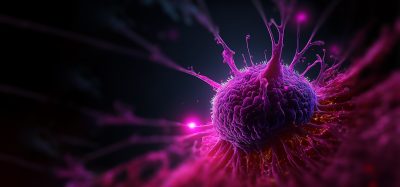Nanoparticles turn vinegar into powerful antimicrobial treatment
Posted: 23 September 2025 | Drug Target Review | No comments yet
Scientists have supercharged vinegar’s antibacterial properties by adding carbon and cobalt nanoparticles – creating a powerful, non-toxic treatment that could help combat drug-resistant infections and speed up wound healing.


Wounds that do not heal are often caused by bacterial infections, and traditional disinfectants, such as acetic acid (more commonly known as vinegar), have been used for centuries to treat them. However, they are only effective against a limited number of bacteria. Crucially, vinegar does not kill the most dangerous of bacterial strains.
Breakthrough research
New research led by the University of Bergen, QIMR Berghofer and Flinders University has found a way to enhance vinegar’s antibacterial power. By adding antimicrobial nanoparticles made from carbon and cobalt, researchers were able to boost its natural bacterial-killing qualities. The findings were published in the international journal ACS Nano.
Molecular biologists Dr Adam Truskewycz and Professor Nils Halberg discovered that these nanoparticles could kill several dangerous bacterial species, and their activity was enhanced when combined with a weak vinegar solution.
Reduce preclinical failures with smarter off-target profiling
24 September 2025 | 15:00PM BST | FREE Webinar
Join this webinar to hear from Dr Emilie Desfosses as she shares insights into how in vitro and in silico methods can support more informed, human-relevant safety decisions -especially as ethical and regulatory changes continue to reshape preclinical research.
What you’ll learn:
- Approaches for prioritizing follow-up studies and refining risk mitigation strategies
- How to interpret hit profiles from binding and functional assays
- Strategies for identifying organ systems at risk based on target activity modulation
- How to use visualization tools to assess safety margins and compare compound profiles
Register Now – It’s Free!
Testing the treatment
As part of the study, Dr Truskewycz and Professor Halberg added cobalt-containing carbon quantum dot nanoparticles to weak acetic acid to create a potent antimicrobial treatment. They tested the mixture against several pathogenic species, including drug-resistant Staphylococcus aureus, Escherichia coli (E. coli) and Enterococcus faecalis.
Once exposed, the nanoparticles appear to attack dangerous bacteria from both inside the bacterial cell and on its surface, causing them to burst
“Once exposed, the nanoparticles appear to attack dangerous bacteria from both inside the bacterial cell and on its surface, causing them to burst,” said Dr Truskewycz. “Importantly, this approach is non-toxic to human cells and was shown to remove bacterial infections from mice wounds without affecting healing.”
He added that the acidic environment from vinegar made bacterial cells swell and take up the nanoparticle treatment.
A tool against antimicrobial resistance
The study’s results suggest that the enhanced vinegar solution could be very effective in the fight against antimicrobial resistance (AMR). Globally, an estimated 4.5 million deaths are associated with direct infectious disease each year, and resistant pathogens are a growing threat.
“Combination treatments such as the ones highlighted in this study may help to curb antimicrobial resistance,” Professor Halberg said. “Given this issue can kill up to 5 million people each year, it’s vital we look to find new ways of killing pathogens like viruses, bacteria and fungi or parasites.”
Looking ahead
The discovery that nanoparticles can transform vinegar into a powerful, non-toxic antimicrobial treatment opens up exciting possibilities. As we look to combat the rising threat of resistant infections, this vinegar-based innovation may provide a simple yet effective contribution in that fight.
Related topics
Antimicrobials, Drug Discovery, Microbiology, Nanomedicine, Nanoparticles, Nanotechnology, Translational Science
Related conditions
bacterial infection
Related organisations
Flinders University, QIMR Berghofer, the University of Bergen








